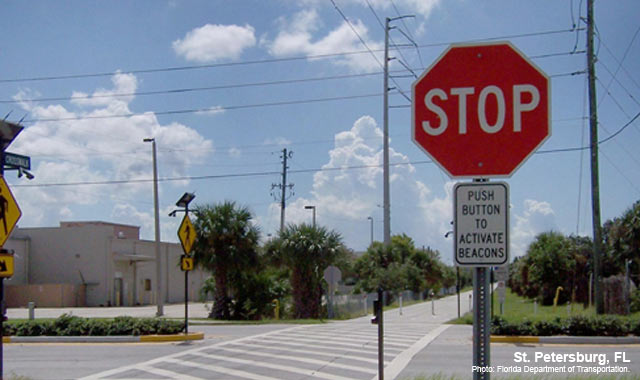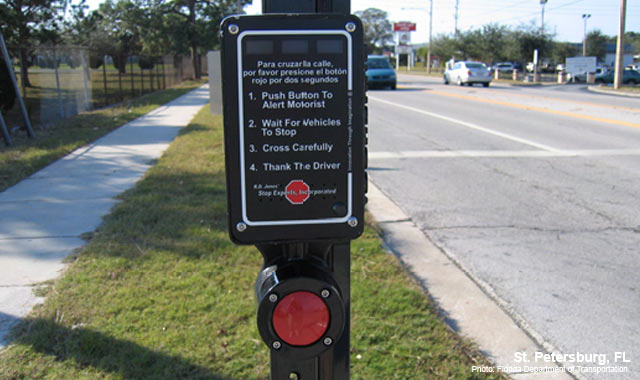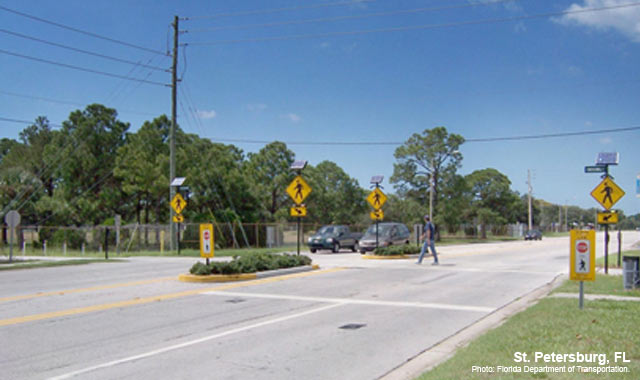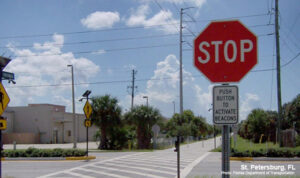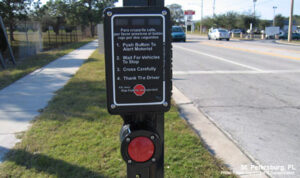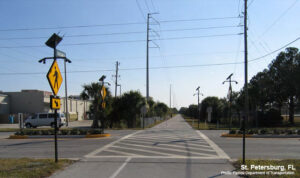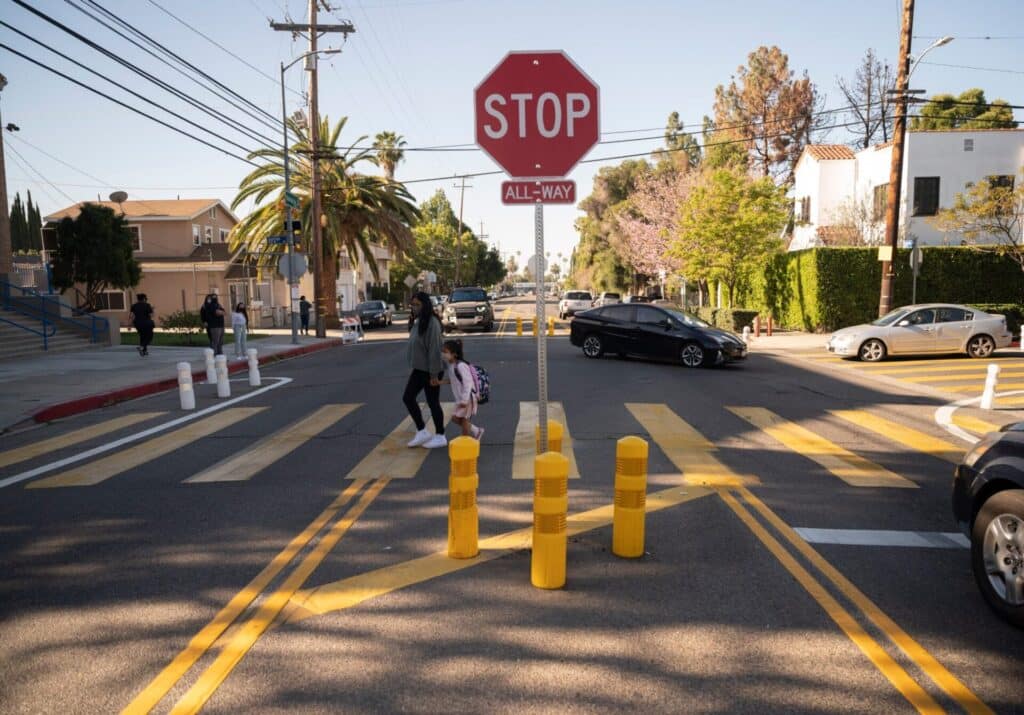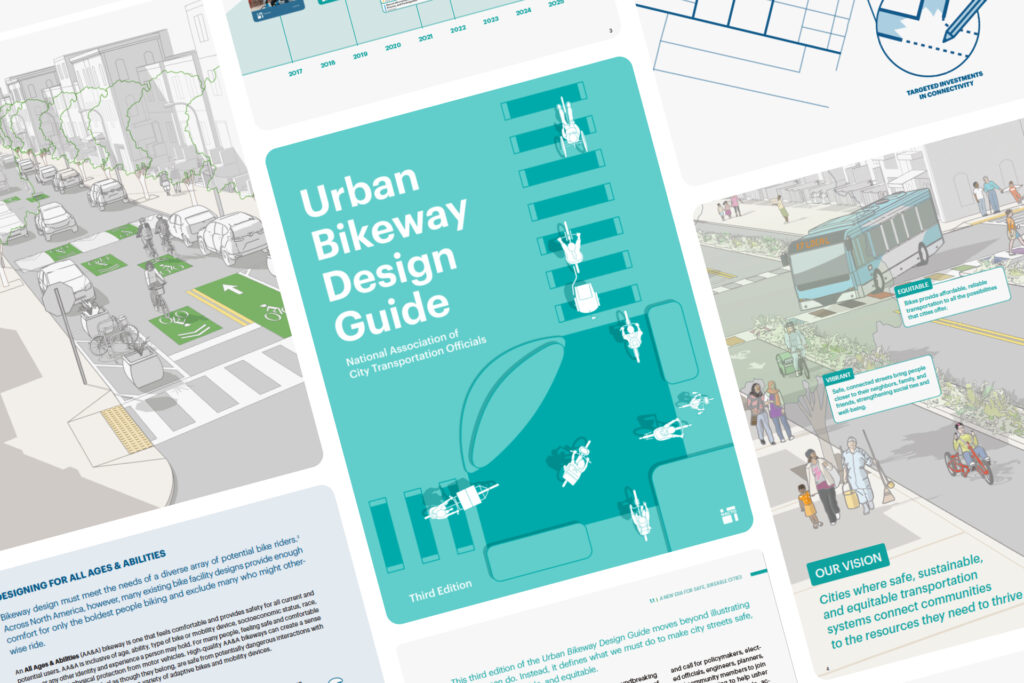In August 2008, as part of a coordinated effort by the North Carolina Highway Safety Research Center and the Florida Department of Transportation to evaluate innovative bicycle and pedestrian improvements, a rectangular rapid flash beacon (RRFB) was installed at the intersection of the Pinellas Trail and 22nd Ave. in St. Petersburg, Florida. The beacon contains two rectangular yellow LED indicators, is solar-powered, and can be activated by bicyclists and pedestrians using a push button. 22nd Ave. N in St. Petersburg is a busy four-lane urban street with 15,000 vehicles per day and a speed limit of 40 mph. Where it intersects with the Pinellas Trail, which has 1,300-2,000 users per day, researchers wanted to study the effect of the RRFB on motorist and trail user yielding patterns. Videotape data was collected and analyzed. The results showed an increase in motorist yielding from 2% to 54% (with an activated flasher), an increase in the percentage of trail users able to cross the intersection, and a decrease in the percentage of trail users stopping in the middle of the road. According to the results of the study, overall safety increased for trail users as a result of the RRFB.
Information and Photographs were compiled from the following report:
Hunter, W. W., Srinivasan, R., Martell, C. (2009). Evaluation of the Rectangular Rapid Flash Beacon at a Pinellas Trail Crossing in St. Petersburg, Florida. Florida Department of Transportation.
